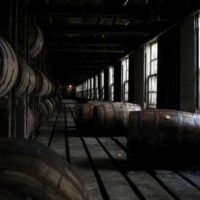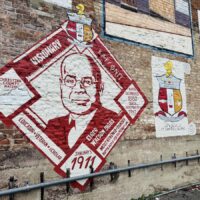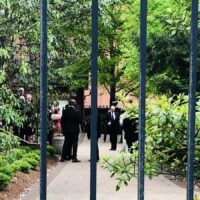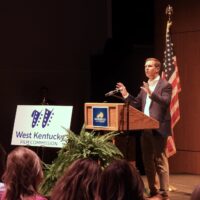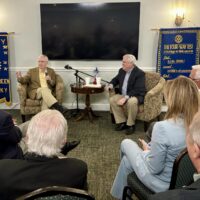One of the oldest and most recognizable buildings in Hopkinsville was reduced to a heap of bricks and lumber Monday afternoon. The demolition of the Phoenix Building at Ninth and Main streets ended with a crash of bricks as a contractor’s employee, operating an excavator, used a bucket at the end of the machinery’s long arm to punch and tug on the building’s last wall.
During the final hour of demolition work, from about 3 to 4 p.m. Monday, the exterior walls closest to the intersection were the last to come down. Innovative Demolition Services of Lexington did the work.
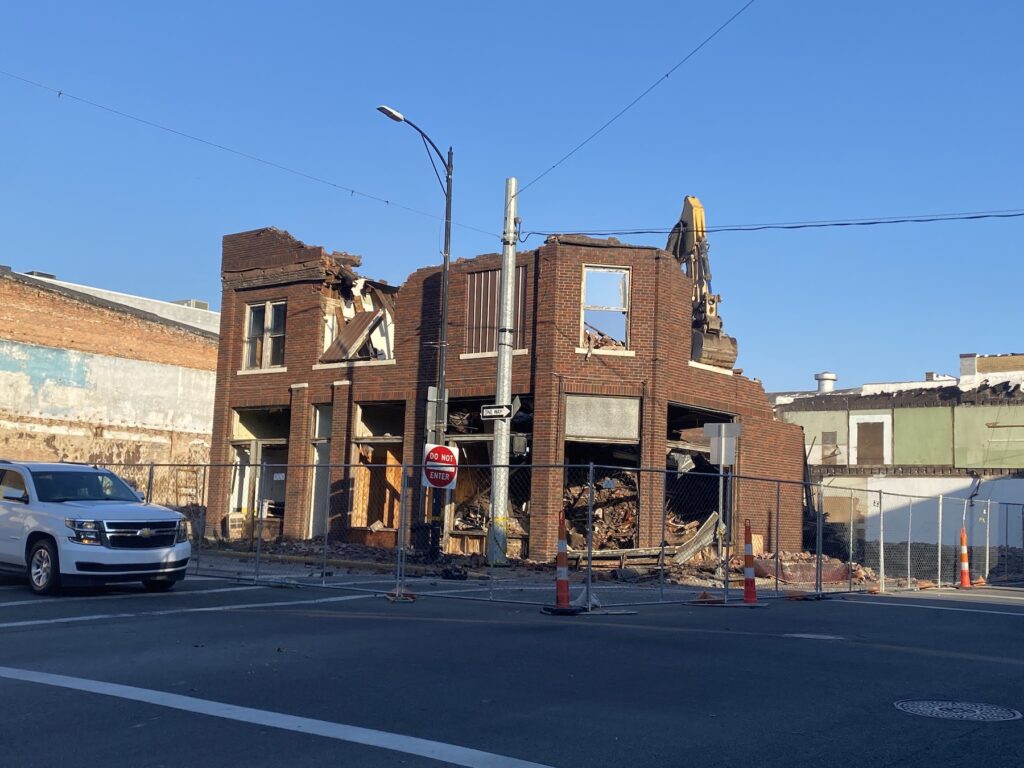
The Phoenix had been in a state of disrepair for several years and most of the building was vacant. Its only tenant in the final years was attorney Kenneth Humphries, who represented building owner Bobo Cravens and his family in a dispute with the city after Hopkinsville Mayor James R. Knight Jr. took office in January.
- RELATED: Western Union bike rack exemplifies a moment in Hopkinsville history
- RELATED: Losing the Phoenix shouldn’t diminish all of downtown.
Knight, at his swearing-in ceremony on Dec. 29, pledged to clean up Hopkinsville “one lot, one abandoned structure at a time.” Less than two weeks later, the Hopkinsville Fire Department sent structural engineer Kelly Gardner, of Owensboro, into the Phoenix — and based on his findings, officials posted “condemned” signs on the building.
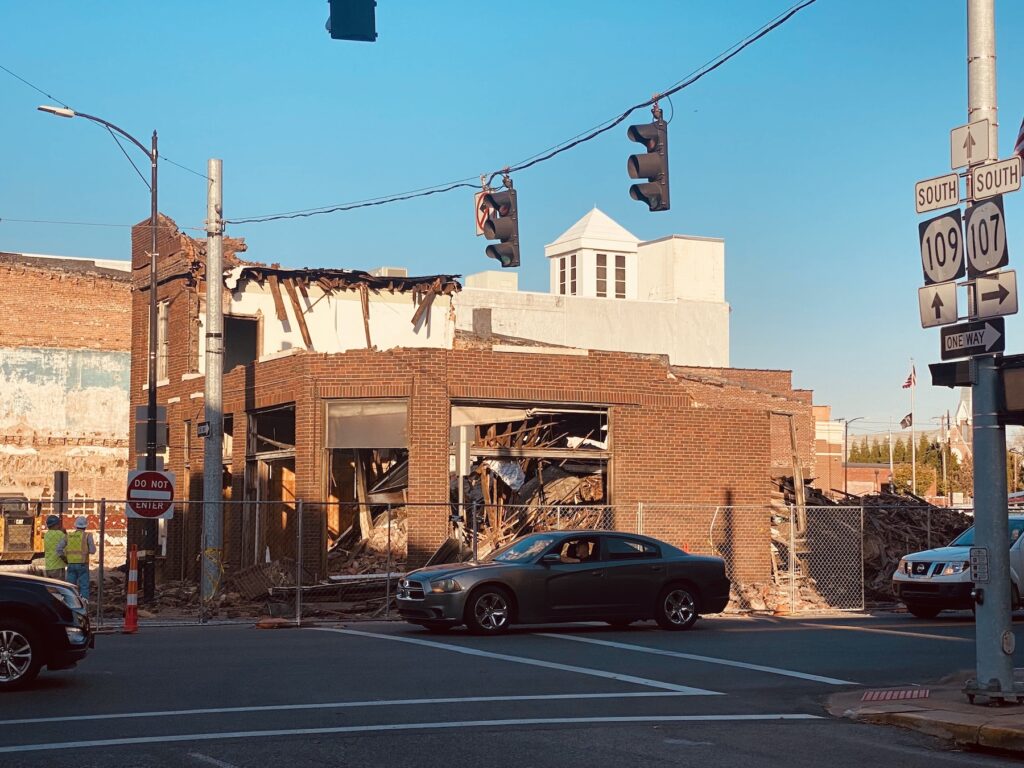
Initially, the city gave the owners 90 days to present a plan to fix the building’s structural problems.
Third building to come down
While the clock ticked on that deadline, the city focused on the condition of two adjacent buildings on South Main Street — the Holland Opera House, also owned by Cravens, and Lee’s Game Room. The same structural engineer examined those buildings and filed a report saying they had “severe structural issues” and should be “demolished immediately.”

Hopkinsville City Council followed the engineer’s findings on the two structures adjacent to the Phoenix and voted Feb. 16 in favor of an emergency declaration that allowed them to award a demolition contract to raze Holland Opera House and Lee’s Game Room. The contract for $388,110 went to East Construction Co., a Hopkinsville firm.
Between late February and early March those two buildings were demolished, opening up a gap on South Main Street in the heart of downtown.
Demolition delays
In mid-July, well past the city’s deadline for the Phoenix owners to present a plan to repair the building, city officials and the Cravens family reached an agreement in Christian Circuit Court to demolish the structure. The agreement called for the city to advertise for demolition bids, while the owners simultaneously searched for a contractor.
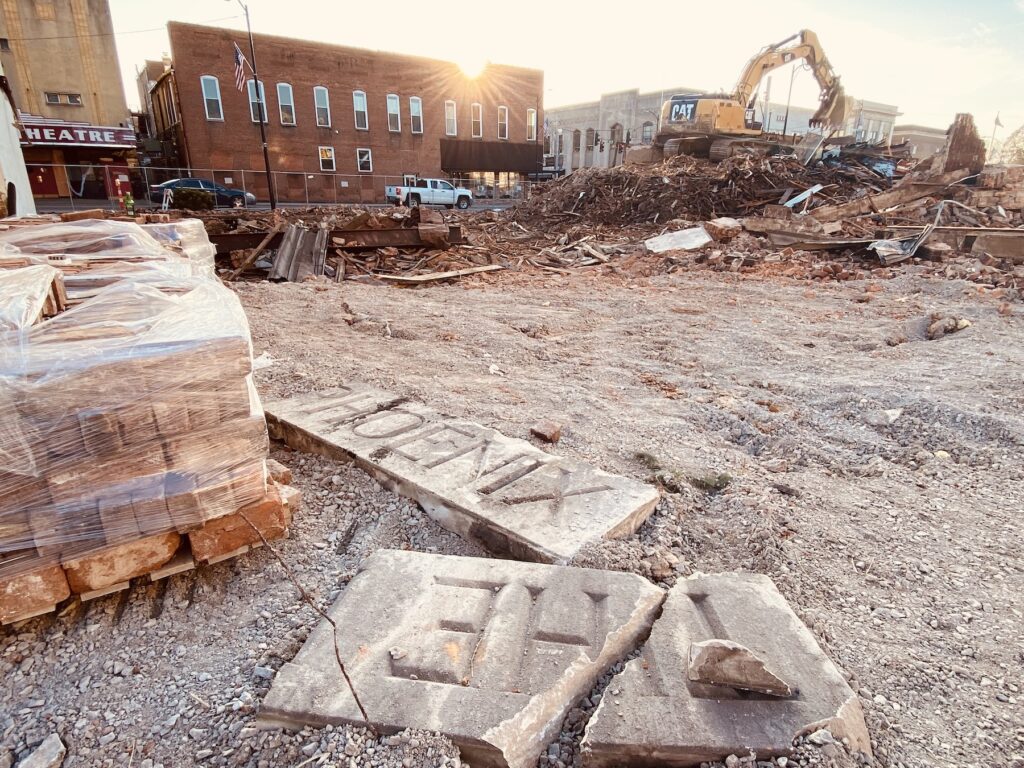
After the city received four bids ranging from $263,000 to $387,000, Humphries sought a court order that would allow the building’s owners to hire their own contractor and potentially avoid the cost of a more expensive bid for a city contractor. Judge Andrew Self granted the order and set an Aug. 7 deadline for work to begin.
Attorneys for the city and the Cravens family were back in court in late August for a status report after the deadline was not met to begin demolition. City Attorney Doug Willen said the city’s contractor was ready to being the demolition, but Self declined to take the job from building owners.
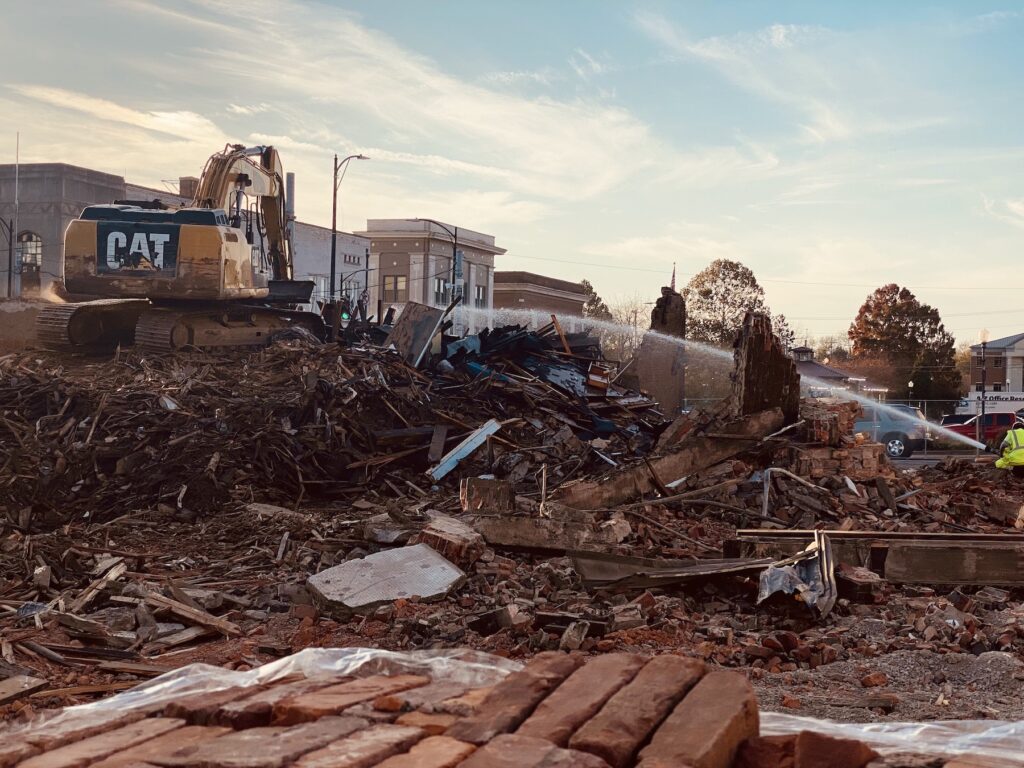
“I don’t anticipate that I would change horses in the middle of the race … and allow the city to move forward with its contractor,” Self said. “But if this thing doesn’t start moving, that’s what we’re going to do. OK. It’s got to get done.”
Humphries attributed the delay to meeting state regulations for asbestos testing.
At that hearing, Alfred Cravens, who represented the family as his father Bobo Cravens’ health declined, asked, “What’s the hurry?”
Self responded, “The hurry is that the building is in a very dilapidated condition … a number of professionals who are qualified in this area have indicated that it presents a danger, and the city has understandably and responsibly moved forward with the process.”

On Sept. 23, Bobo Cravens died at age 92. For several decades, he ran Blue Streak Printers in the East Ninth Street building adjacent to the Phoenix.
Looking back
Christian County Historian William T. Turner previously told Hoptown Chronicle that the Phoenix was built as a hotel in the early 1800s and was heavily damaged in a fire in the 1920s. It was rebuilt and remained a prominent property standing at the symbolic center of the city — Ninth and Main streets.
Many older residents of Hopkinsville recall the Phoenix as the home of Cassidy’s Kiddie Corner, a child’s clothing store, in the mid-1900s. The Gold Gallery, a jewelry store, followed Cassidy’s. In the 1990s and later, the Phoenix was a popular site for political headquarters during elections.
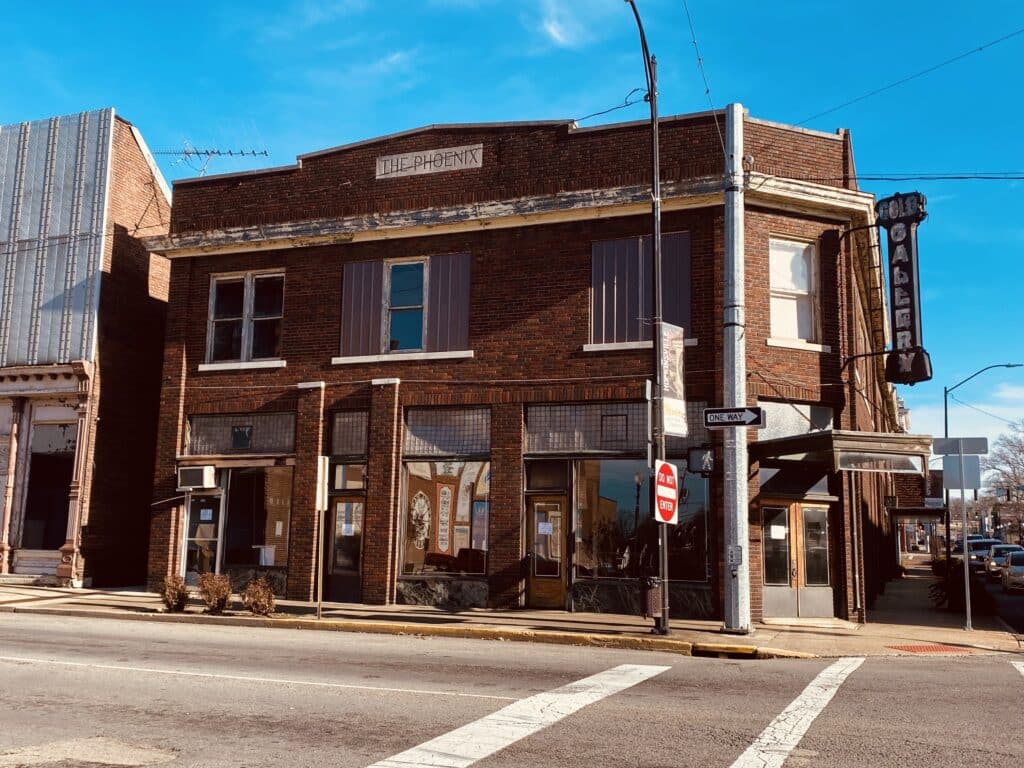
Many of the bricks salvaged from the Phoenix will be used to repair a wall at the Woody Winfree Fire and Transportation Museum on East Ninth Street that was blown out by a storm last spring. That building is the former central fire station and supports Hopkinsville’s iconic clock tower.
Jennifer P. Brown is co-founder, publisher and editor of Hoptown Chronicle. You can reach her at editor@hoptownchronicle.org. Brown was a reporter and editor at the Kentucky New Era, where she worked for 30 years. She is a co-chair of the national advisory board to the Institute for Rural Journalism and Community Issues, governing board past president for the Kentucky Historical Society, and co-founder of the Kentucky Open Government Coalition. She serves on the Hopkinsville History Foundation's board.
